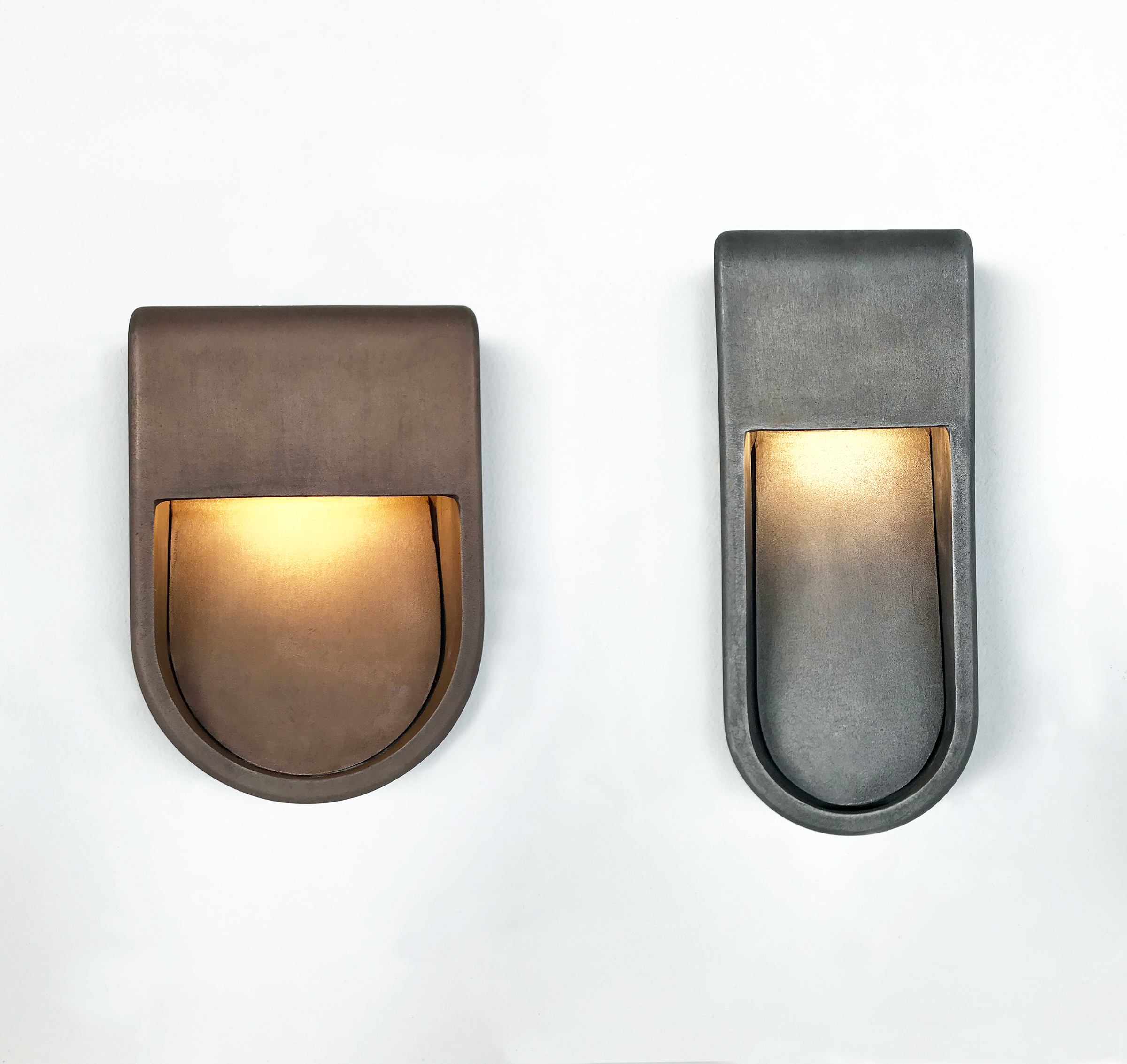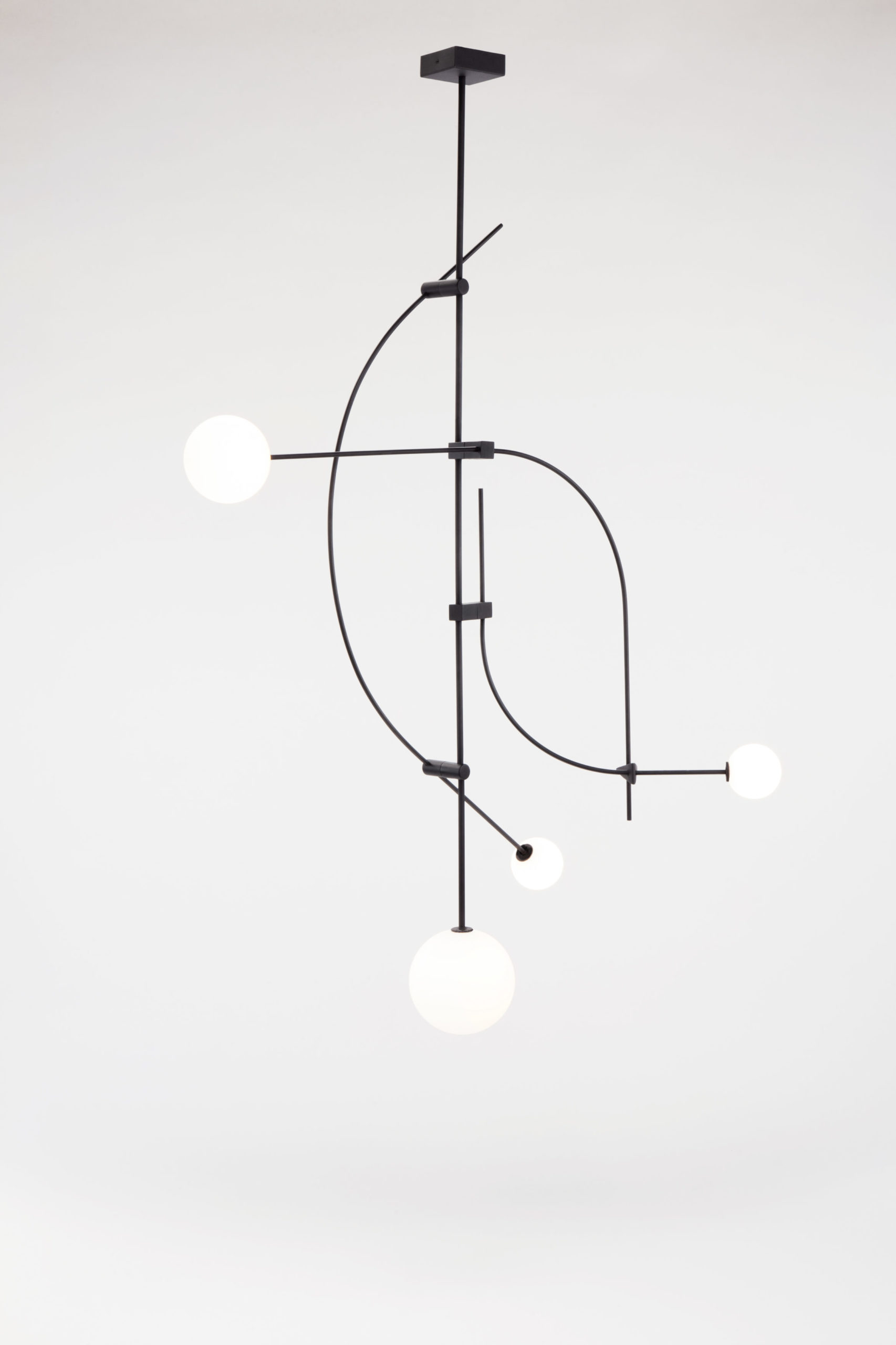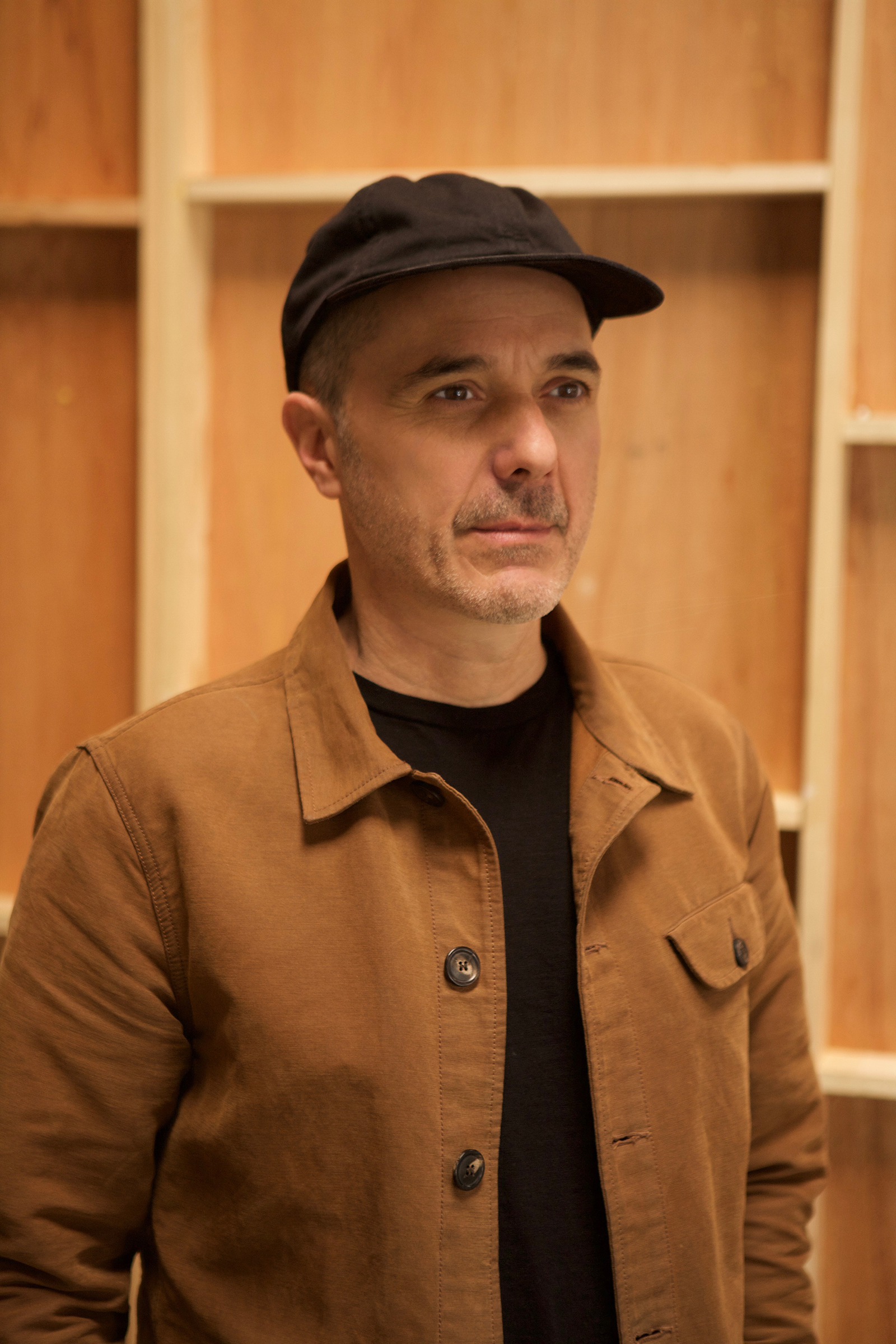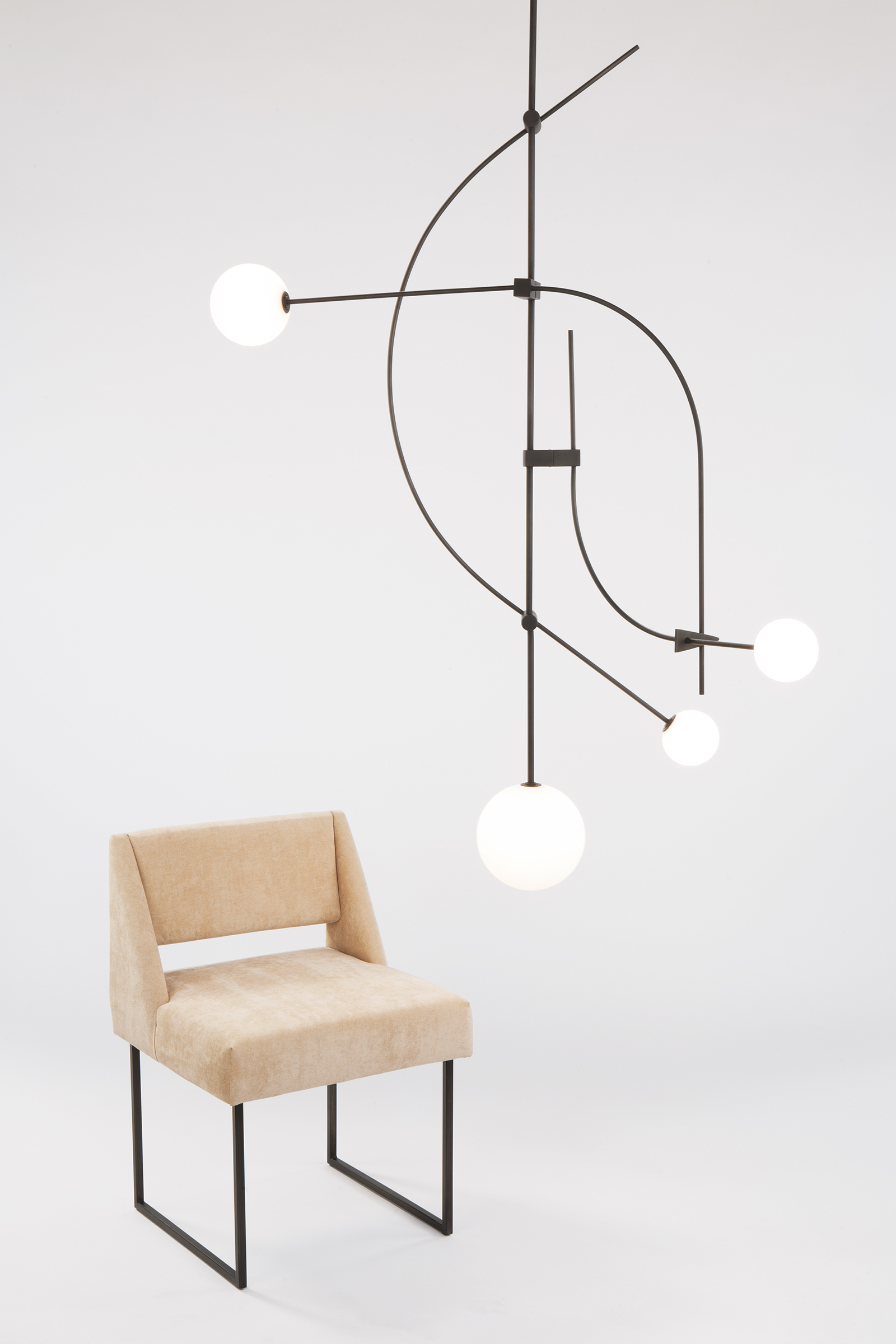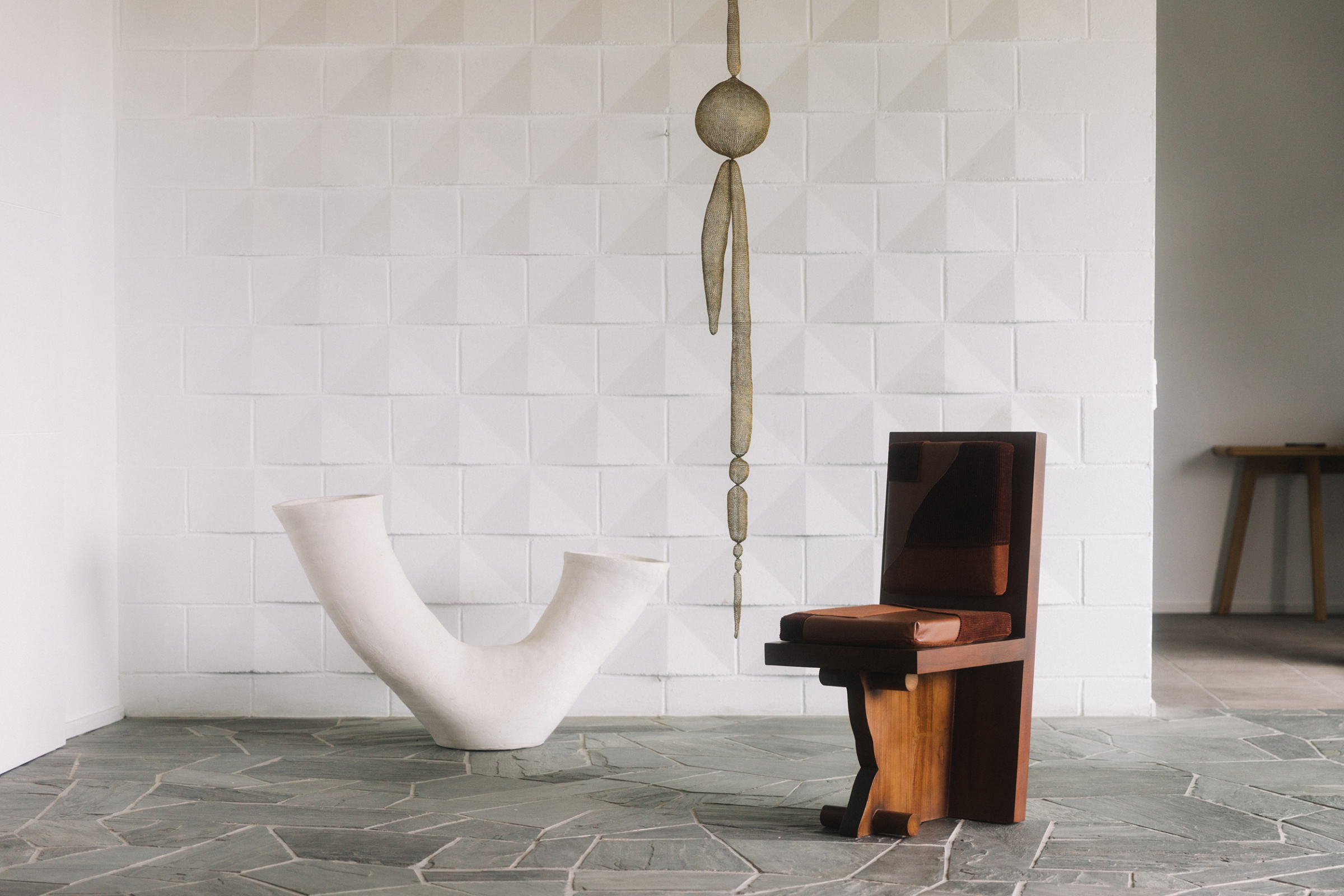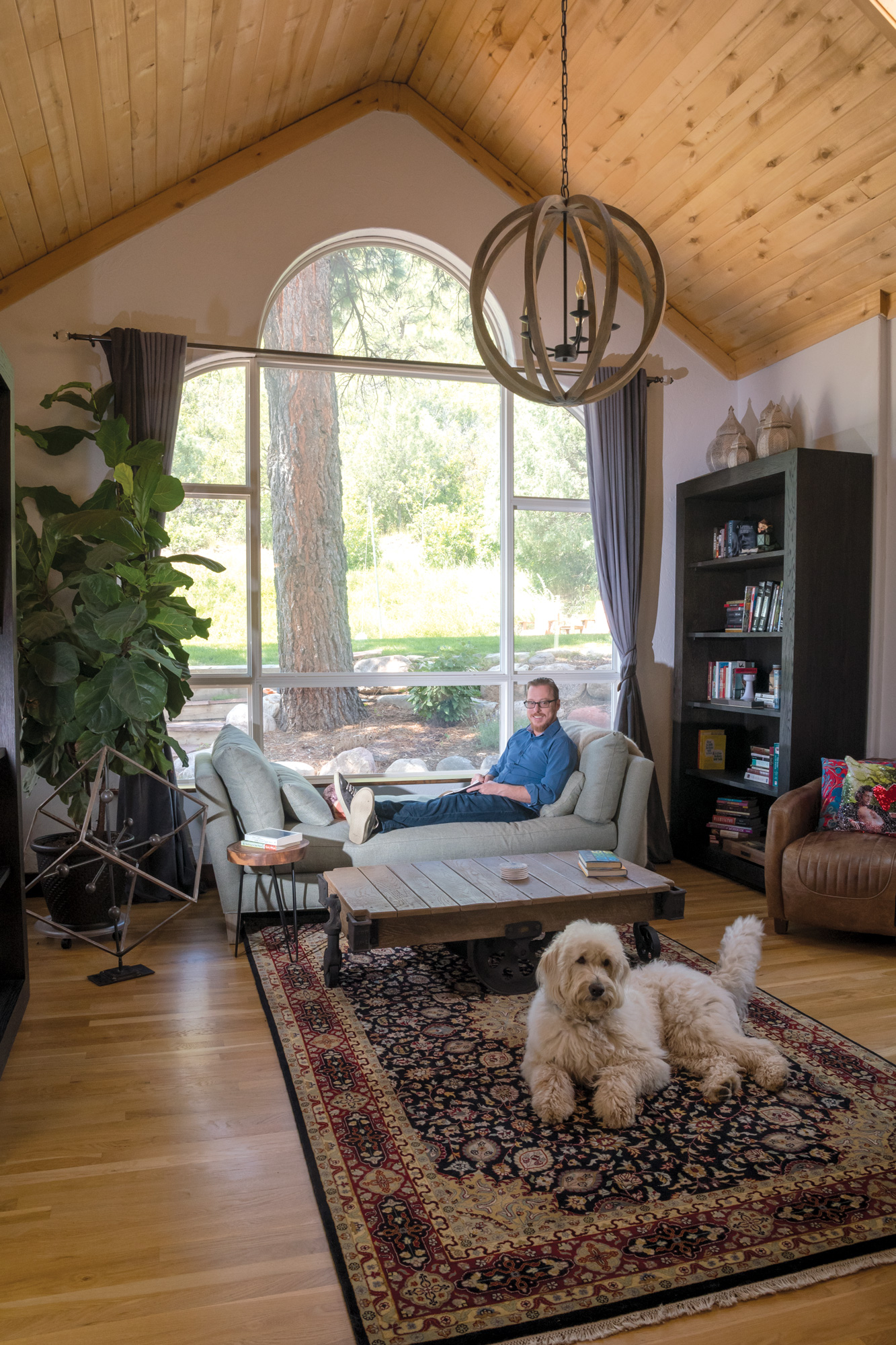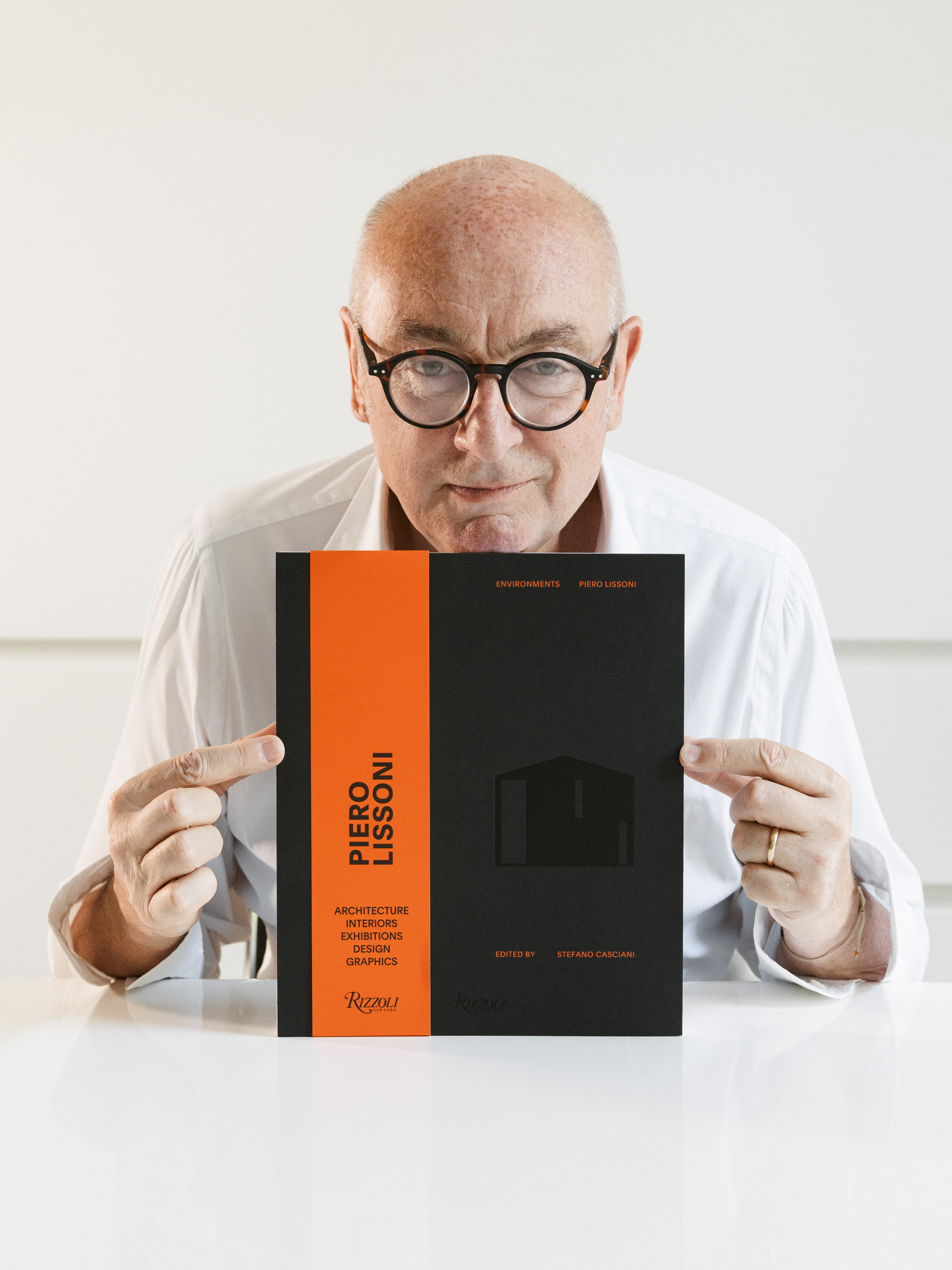Founded by Gabriel Abraham in 2011, Atelier de Troupe is an LA-based creative studio and manufacturer, synonymous with 20th century-inspired luminaries and furniture. Inspired by Bauhaus, 1960s Italian cinema, and French decorative design, each piece portrays an evocative, bold, surreal and self-aware presentation of well-crafted products.
The studio launched a new product during Salone del Mobile, titled Empire, in collaboration with Studio Pepe. Unveiled at the ‘private member’s club’, Club Unseen, the Empire floor lamp was totemic to its 70’s art influence, and complimented the pastel-hued setting of soft, velvet furnishings with a harsh brushed aluminum material. Alongside this, the Kyoto was released during the International Contemporary Furniture Fair (ICFF) in New York this year, which sees a unique and versatile collection of sconces fit for both indoors and out. Formed from sand cast in bronze, brass, and aluminum, each sconce replicates in some ways a hand-made sculpture, elegant and bold in its form and also completely water resistant.
We went behind the scenes to unpick the design process behind Atelier de Troupe and to find out more about Abraham’s journey into the design industry.
Run us through your background: how did you make the transition from set design to creating furniture?
I went to art school in France and I was in a few bands in the 80’s – this is where I formed my visual vocabulary and when I started to direct ‘arty’ films. But working in the art department on music videos and television was more lucrative and better suited for me. Later, it also felt like a natural transition to design objects, utilizing my visual and art background in making props and decors.
- Club Unseen by Studio Pepe and Atelier de Troupe.
- Temp Chandelier by Atelier de Troupe
What’s the Atelier de Troupe design ethos?
The design ethos is like very much like being in a band or making a film. You start with an idea, a time and space and then come up with the characters who will live with the objects you are creating.
Your work toys with the imaginary décor of the 20th century – why this era in particular?
I love classic movies and a certain glamour they recreate; maybe it’s the influence of the 50s and 60s on my generation. The 80s re-invented those eras when artists and designers needed a fresh start, called the post-modern period.
What does a usual working day look like in the studio for you?
It’s very much like an artist studio. The design team and I do all the conceptualizing and imagine what would make a cohesive whole from past collections to newer ones. We prototype and then send it out to our different local vendors while dealing with the day-to-day operation of orders coming in and products shipping out. Like most other modern studios, the computer and the internet have given us more freedom but it has also made us work twice as much.
I believe today we are ready to give away our everything for fewer, simpler and more sensual things.
What were the reasons for making the Empire and the Kyoto? Both share some similarities in terms of materiality and the sculptural form – why so?
I believe today we are ready to give away our everything for fewer, simpler and more sensual things. The Kyoto is tactile and sculptural, and the Empire, designed by Studio Pepe for Atelier de Troupe, is angular and smooth with a similar approach – they’re a return to simplicity.
How were they made – did you use any particular techniques or technologies?
We are currently trying out sand casting techniques, which we are very excited about. After using them on the Empire and Kyoto, we now plan to implement these techniques on future fixtures and on our future ‘objects’ collections.
Do you have any favorite projects that you’ve worked on?
The latest project is always the most exciting and the new favorite. We’re always drawn to hotels because of the design experience that they bring – it’s something we’ve always loved being a part of.
- Gabriel Abraham of Atelier de Troupe
- Temp Chandelier and Cubist Chair by Atelier de Troupe
What’s the current LA design scene like? Are there any specific trends that you can pick out?
The Spanish and Mexican history is a definite and particular influence in LA. This includes the likes of Frank Lloyd Wright and the post-war influences of the Bauhaus, with Schindler and Neutra moving here in the 20s and in turn influencing artists and newer generations of architects and designers. The resurfacing of the huaraches and the embroidered shirt-wearing newer generation here is a proof of that unique Californian identity.
Do you think that design is and should be trend-led? What are your thoughts on this notion of fashion-swayed designing?
As it was for me in art school, the more obscure your references the better you are off. Everything is recycled or re-invented in a way because you need the context to be relevant to the design or fashion shifts.
What are you working on at the moment?
We are currently working on next year’s collections, which has something twith huarachesaches . That’s all I can tell you!
